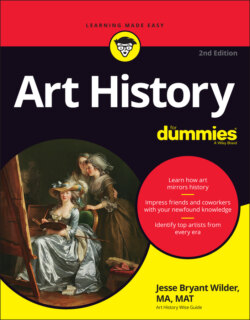Читать книгу Art History For Dummies - Jesse Bryant Wilder - Страница 81
Fickle Gods, Warrior Art, and the Birth of Writing: Mesopotamian Art
ОглавлениеIN THIS CHAPTER
Exploring the skyscrapers of the ancient world
Eyeballing Sumerian sculpture and graven images
Seeing through propaganda art
Reading the first visual narratives
Hanging out in Babylon
And Terah took Abram his son … and they went forth … from Ur of the Chaldees, to go into the land of Canaan [modern Lebanon, Palestine, and Israel]… .
—GENESIS 11:31
Mesopotamia, which means “between rivers” in Greek, is bounded by the Tigris and Euphrates rivers, which fertilize it throughout the year. For this reason, it is also known as the Fertile Crescent. Note: Some archeologists believe that this fertile belt of land, where fruits and grains once flourished in natural abundance, was the biblical Garden of Eden.
Sumer — a cluster of city-states in Mesopotamia — was a land of firsts. The Sumerian patriarch Abraham (see the sidebar “Civilized lords or black-headed people?”) founded monotheism (belief in one god), and the Sumerians invented writing. They also created the first epic poem, Gilgamesh, and the earliest codes of laws, the most famous being the Code of Hammurabi. Archeologists even found the oldest wheel in Sumer — it’s about 5,500 years old! The Sumerians seem to have made the first potter’s wheel, too. What a creative bunch.
Power changed hands in Mesopotamia over and over during the 3,000 years in which the pharaohs maintained a fairly steady hold on Egypt. The art of both civilizations tells the story of their governments. Egypt was stable and so was its art, which hardly changed in 3,000 years (see Chapter 6). Mesopotamia’s art changed almost as often as its rulers, each conqueror bringing new influences.
